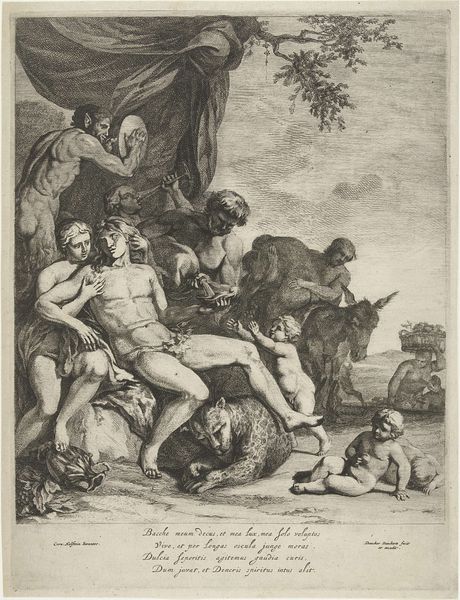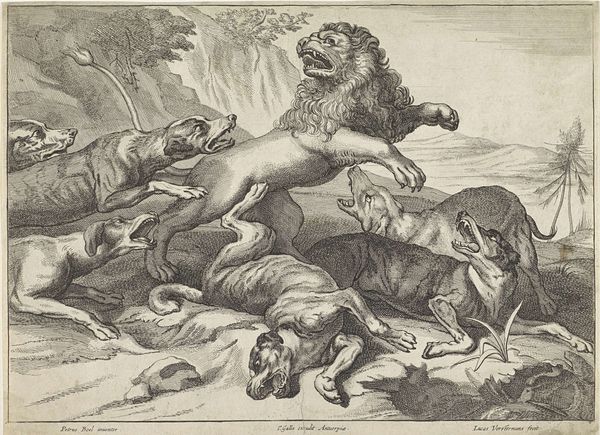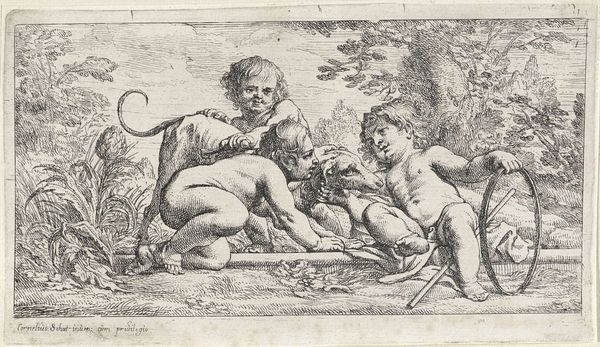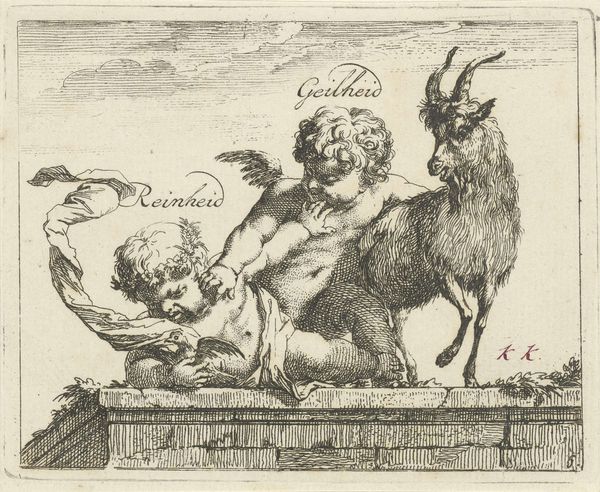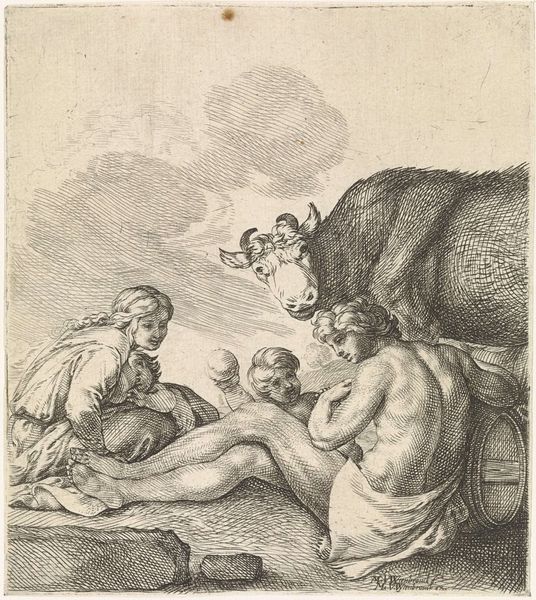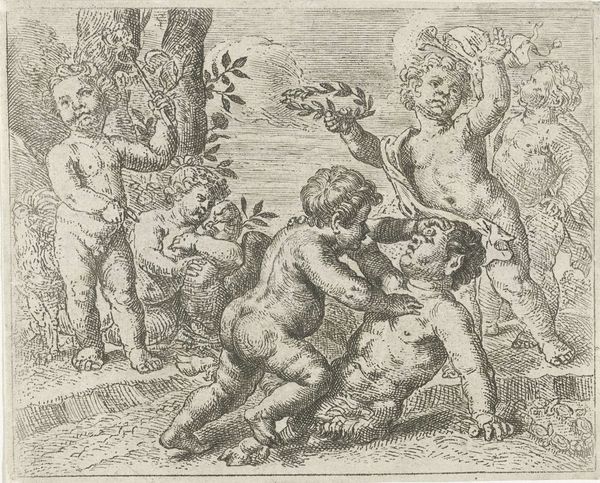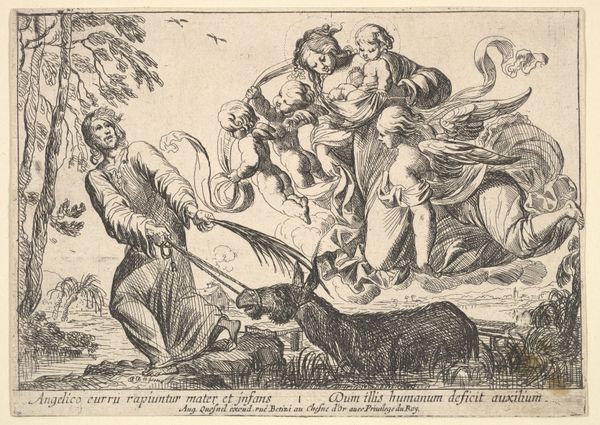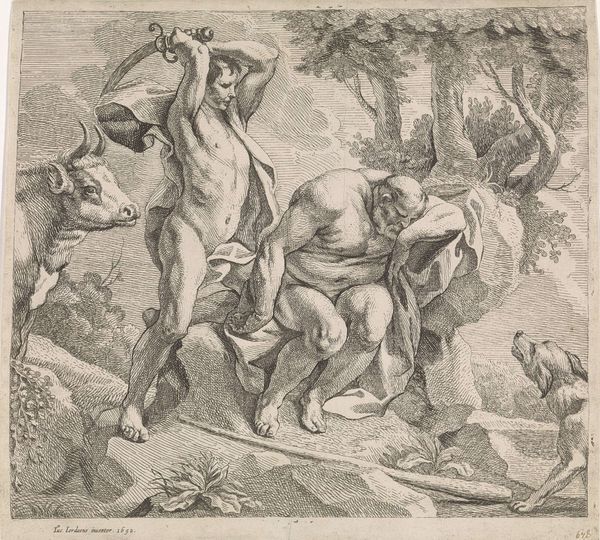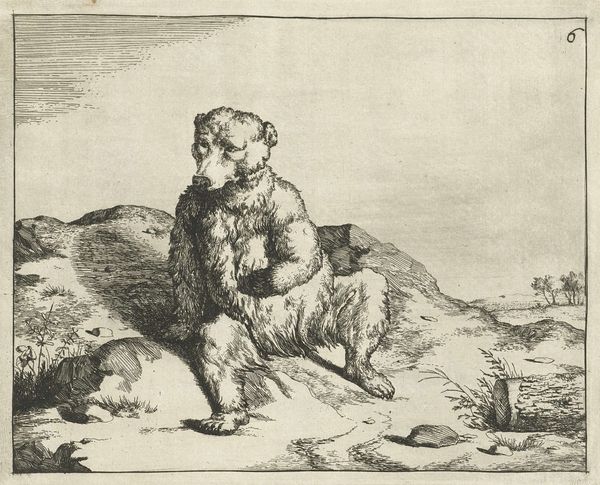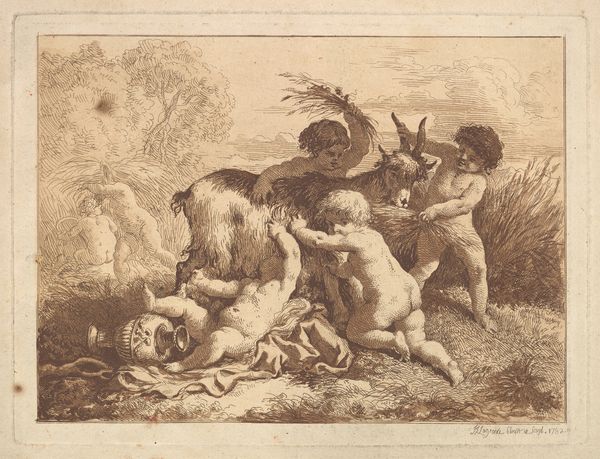
print, engraving
#
pencil drawn
#
narrative-art
#
baroque
# print
#
pencil sketch
#
figuration
#
pencil drawing
#
engraving
Dimensions: height 106 mm, width 137 mm
Copyright: Rijks Museum: Open Domain
Curator: Here we have Willem Panneels’ “David killing a lion and a bear,” created between 1610 and 1634. This print, residing here at the Rijksmuseum, depicts David’s triumph. What’s your initial take? Editor: Well, first off, it's intense! The dynamism of the wrestling figures is remarkable, even in this small-scale print. The hatching and cross-hatching give it a raw energy. Curator: Agreed. Let’s delve into that 'raw energy'. Considering Panneels worked in Rubens's workshop, this engraving speaks volumes about the dissemination of artistic labor and influence in 17th-century printmaking. Think of the process involved, from the initial sketch, likely by Rubens himself, to Panneels’ execution and the multiple impressions made for circulation. Editor: Precisely. The formal qualities reflect that dynamic exchange. The composition—the interwoven figures, the contrast of light and shadow—directs the eye to the central struggle. Notice how the lines create a sense of depth despite the limited tonal range. It’s Baroque energy condensed. Curator: It makes you think about printmaking as early forms of mass production. Each impression carries the mark of that collaborative process and extends the reach of these iconic narratives to wider audiences. The social aspect, beyond the art object, is really at play. Editor: Indeed. And it's hard to ignore the symbolic weight of those conquered beasts, emblems of chaos and untamed nature subdued by divinely sanctioned strength. They represent more than mere animals; they're embodiments of threats to the social order. Curator: And what do you make of those sheep clustering to the side? Are they witnesses? Symbols of the flock under David’s protection? How does their representation play with your idea of “social order?" Editor: Perhaps. They provide a certain balance, visually anchoring the chaotic violence. Their placid presence enhances the drama, yes, underscoring what is at stake in this heroic confrontation. They provide a sense of perspective on a broader theme: divine providence shielding the innocent. Curator: I hadn't considered that—brilliant! Editor: Well, on that note...it's quite interesting to unpack a work like this—so economical in means, yet rich in both drama and meaning. Curator: Exactly. I see this not just as an object of aesthetic value, but also as a document that exposes networks of labor, religious zeal, and popular demand.
Comments
No comments
Be the first to comment and join the conversation on the ultimate creative platform.
